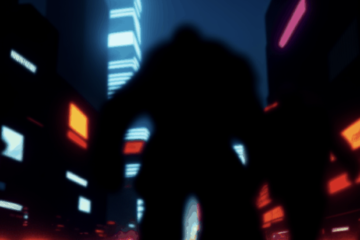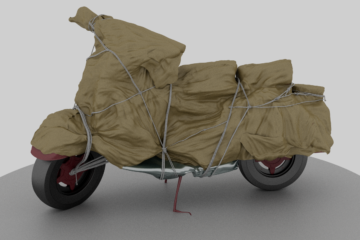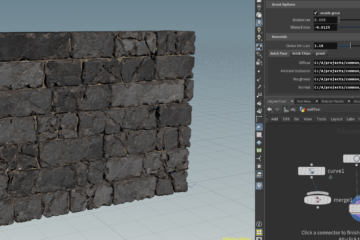IT’S ART gives a behind the scenes peek at Game of Thrones Season 3 in an interview with Pixomondo VFX Supervisor Sven Martin.
Still looking for inspiration for our new exciting challenge based on ‘A Song of Ice and Fire’? We’ve the chance to interview Pixomondo VFX Supervisor, Sven Martin, about the VFX made for Game of Thrones Season 3, focusing on the making of the dragons. A perfect way to start a creative day!
IA: Pixomondo is working since the first season on the VFX of Game Of Thrones TV Show. Could you speak about the evolution of the work you’ve done for the series since 2 years?
SM: With the knowledge of the second season we could start right away with facing the new challenges. The dragons where not just bigger copies of the previous season, actually we had to build them from scratch spending a huge amount of time into design and developing the new features. This time the camera was also much closer to the dragons, so we had to go much more into detail. The jaw e.g. had a special mechanic which could hide in ‘normal’ position and slide out and extend when Dragon goes into threatening mode. The complete inner mouth section had to be very precise with tongue, glands (for fire breathing) and dangerous teeth covered in saliva with the camera facing right at it.
IA: How many shots Pixomondo has worked for this season?
SM: In Season 3 we worked on 151 Shots, split into set extensions and creature work. We have recreated places we’ve already visited in Season II and new sets like the extension of Ait-ben- Haddou, an acient city in Morocco. The Manticore attacks in one episode and the dragons appear on multiple locations, in the later episode in combination with crowd replications of armies and people.
IA: The dragons have appeared in Season 1 and have grown every year. How have you deal with the evolution of the animals? Can you speak about the research done on the models, the rig? How does the complexity have changed with each season?
SM: From season II to III we changed the body proportions even more towards a typical bird skeleton. The wings got enlarged to a physical correct size to the body. We referenced a lot of footage from bats, birds or eagles for the various requested flight actions. They had to fly fast, hover, glide majestically or dive into water from some height.
To make them appear grown into teenage age, we shrunk the head slightly and implemented more spikes around the face and neck, little bit a like a first growing beard. Also the dragon got some nice scary features which they display in threatening mode.
The rig became much more complicated in the last season, especially with the higher detail and all the larger spikes, horns and expandable frills. All this can’t be achieved with traditional sculpting and displacement and has to be implemented fully functional in the virtual rig. It’s always amazing to see how complicated and complex nature is, when you are starting to rebuild it digitally.
IA: What was your references for the dragons to define their abilities to flight, fight, the way the throw fire, etc …
SM: Main approach to create believable creatures was to study and imitate real living animals. Also we build up our dragons from ‘insight out’ starting with a anatomical correct skeleton, building muscles and skin above. While the skin tones are a mixture of existing reptiles, the body proportions mimic bird-like animals to make them fly when they are getting older. As with the modeling and design we referenced a variety of different flying animals and used the most interesting parts for our animation. While adopting the flight behaviors from bats till eagles we always had to maintain a believable mixture.
IA: The dragons were part of one of the key scene of season 3. How Pixomondo have been involved in the scene ( I try to avoid spoilers, but it’s quite hard ! ![]() )
)
SM: It’s always tricky to deal with various elements in a scene and when there is a connection between actors and virtual counterparts. This time we could use a lot more real fire elements which Joe Bauer, production visual effects supervisor, shot on set. This was great to use, because you get all the fine detail, smoke and interaction for free. In this particular scene they shot a plate with the actor playing getting burned, then a similar plate with a stuntmen getting really getting grilled by a flame thrower near the position the dragons head will appear later. These plates got combined with an invisible wipe, were re-projected simple geometry to unlock the camera and got finally the cg dragon added.
IA: Can you give us details about your internal pipeline?
SM: All creature work is done in Maya, while the set extension are build in 3dsMax.
Sets an environments are a combination of 3DSMax renders and projected matte-paintings created in Photoshop. Most of footage was acquired on a photo safari in England which resulted in tons of hires images of old castles, walls and landscapes. As with the creatures the idea was to start first with a real castle rebuild and then changing or adding elements and pieces which shifts the design into the world of Westeros. For our water simulations we use Naiad in conjunction with Krakatoa an Thinking Particles. Both 3DSMax and Maya is connected for rendering in Vray.
The dragons are created within our Maya pipeline which relies heavily on a department structured workflow with specialist on each task. To fulfill the needs of a tight TV schedule, all departments can work parallel and submit their latest version to the next artist while still refining the work. So after the match move, while the animation is still ongoing, the lighting artist can prepare the virtual lamps while there are still new features are build into the rig by the TD’s.
IA: Have you develop some special scripts, can you speak about the R&D done for the movie?
SM: To bring in as much as possible naturalistic complexity into the dragons, we tried to find a good balance between technique and visibility. Only what is really visible on screen in the end was put in, and this was still more you can normally do on a television series. The skin for example has all the stretching and squashing which is calculated by a plugin but is not simulated like a cloth object, where the result is hardly predictable. You should never lose the control to make sure hitting the next deadline.
Most of the crowd shots where done the ‘traditional’ way replicating the extras into the depth. Due to the moving cameras this build as 3D card setup in Nuke to achieve the needed parallax. Very wide shots are a combination of plate element with the main actors, card extension to a full cg army. The final shot of the season for example starts with a top shot of Dany, a virtual camera taking over extending the height showing a crowd replication of extras near the edges which get extended by cg people filling the wide area.
IA: What was the hardest scene you’ve worked on for the new season? Why?
SM: A tough shot was definitely the opening shot where the dragon is approaching the sail ship with Dany aboard. We had to deliver this long flight as a trailer shot and the dragon itself was not finished at this point. Beside this we had turn the linear camera path of green-screen ship element into a free flowing camera, adding bow, sails and rigging to the ship, placing it into a full cg environment with a digital ocean, foam and sky.
Another tricky shot was having all the dragons fighting in mid air about a piece of meat, tossed by Dany sitting in a tent. With having the wings expanded the dragons became quite big and it was a real challenge to make them not intersect, not strike the actors and still keep a believable flight behavior.
IA: In your opinion how would you define your work as art?
SM: Why would you deny someone with a pencil to be an artist? Most of our artist have a traditional background and we still use drawing on paper as the fastest way of communication. A lot of design and concept is involved in our daily work and a good understanding of storytelling is needed to fulfill these tasks. As all the others we feel as part of the filmmaking crew.
IA: Anything else?
SM: Thank you for your interest in our work, happening invisible ‘behind the curtain’!
source: PIXOMONDO


